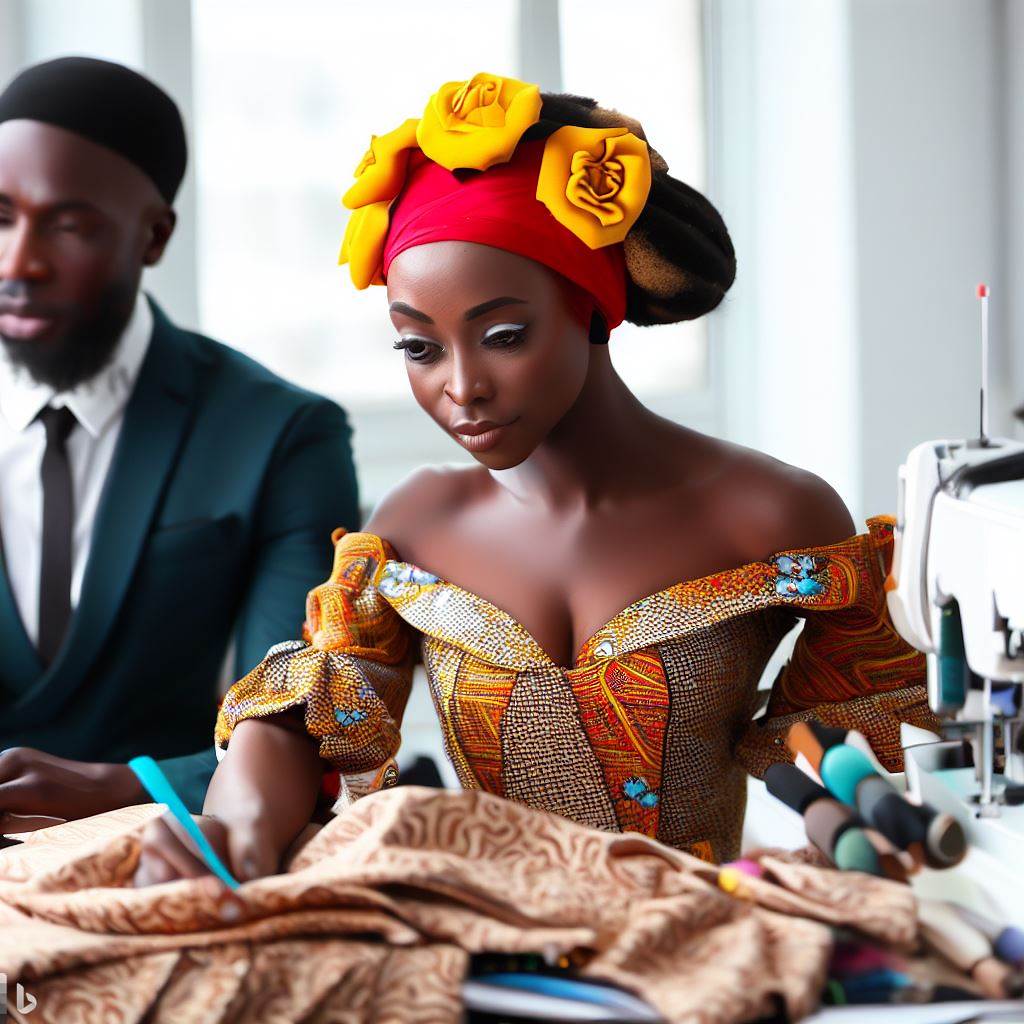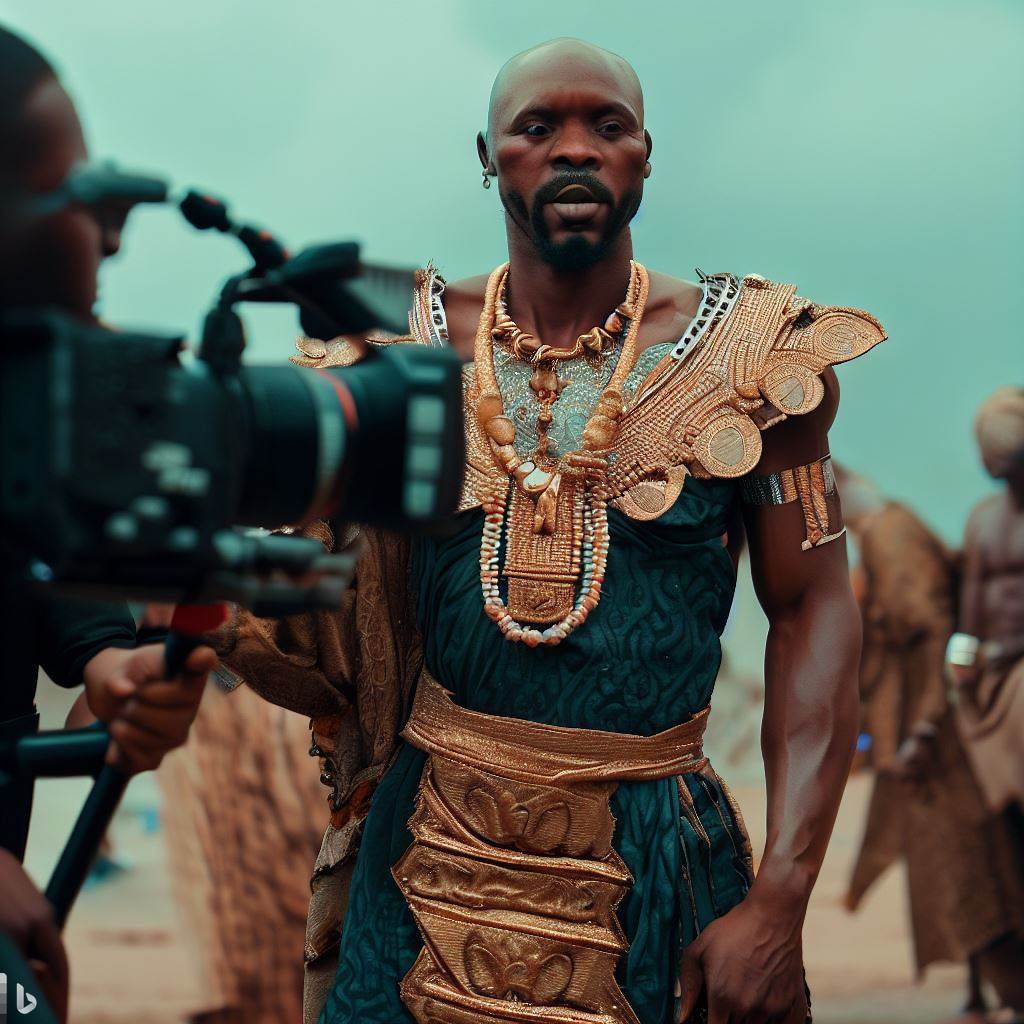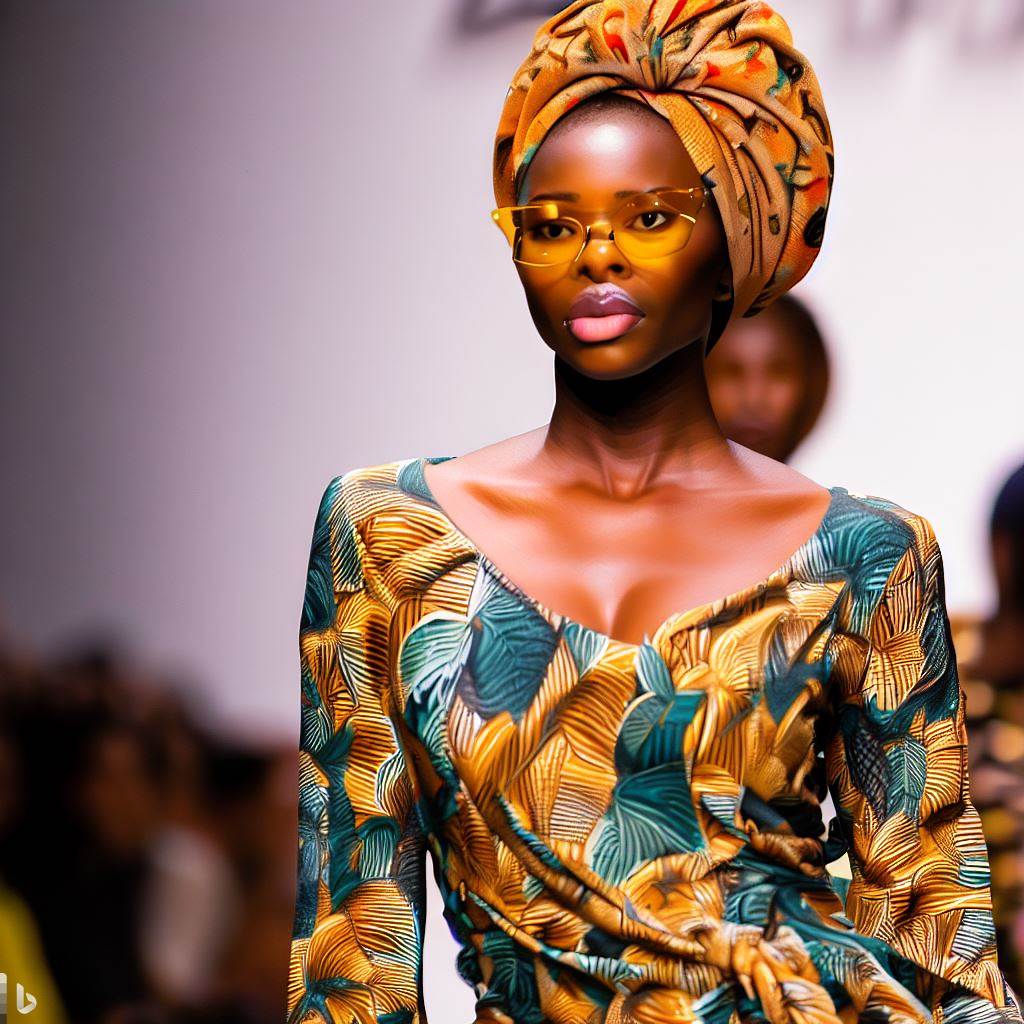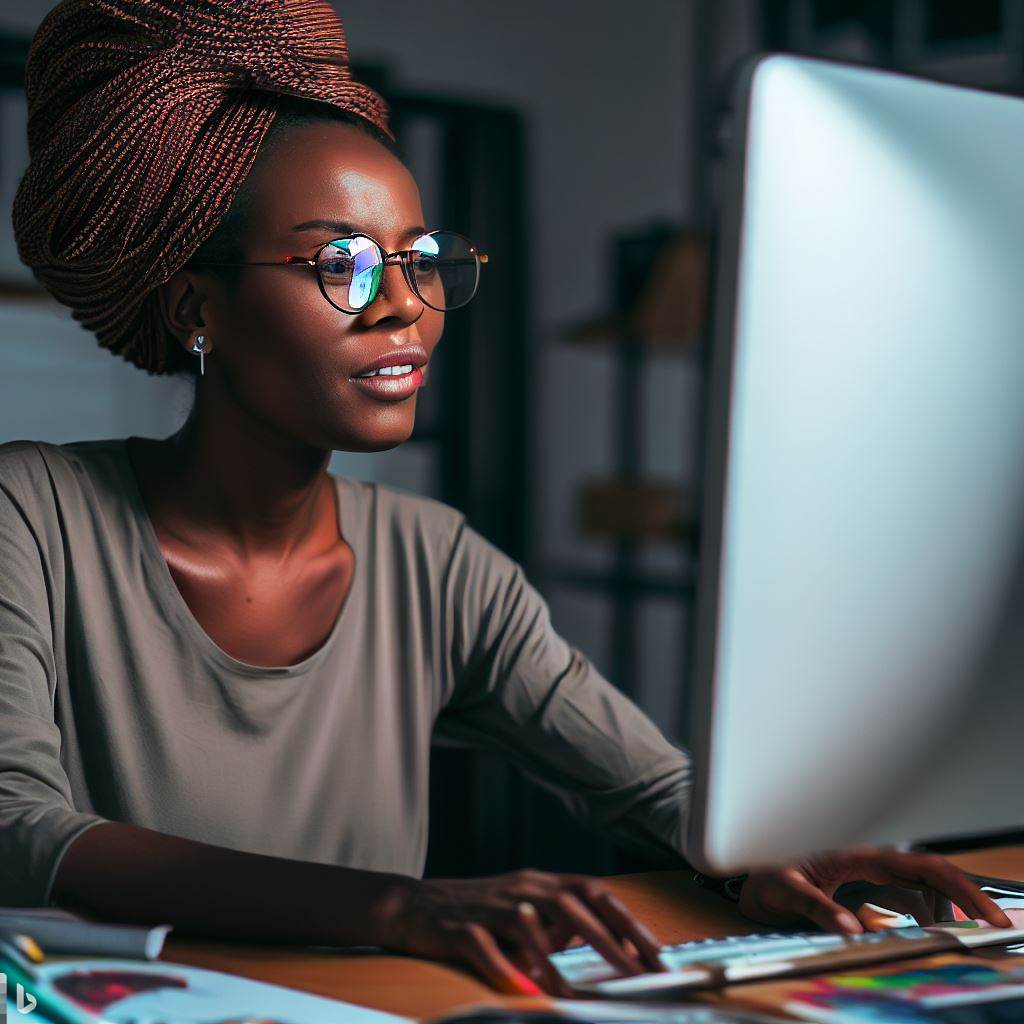Introduction
Nigeria’s film industry, popularly known as Nollywood, has witnessed significant growth over the years.
With its rich storytelling and vibrant culture, Nollywood has captured the attention of audiences worldwide.
Amidst the glitz and glamour lies the diligent work of the costume designer, who plays a crucial role in bringing characters to life.
Costume designers in Nigeria have mastered the art of transforming a simple outfit into a powerful storytelling tool.
Their knowledge of Nigerian history, culture, and fashion trends is remarkable.
These designers work closely with directors and actors to carefully craft costumes that align with each character’s personality and tell their unique story.
Behind the scenes, the daily routine of a Nigerian costume designer is far from mundane. Each day begins with thorough research on the film’s setting, time period, and characters.
This entails studying historical records, consulting experts, and scouring through fashion archives to ensure accuracy and authenticity.
After the research phase, the designer dives into the creative process, sketching and brainstorming ideas to bring the characters’ vision to life.
Collaborating with tailors, seamstresses, and artisans, they meticulously create designs, selecting fabrics, colors, and accessories that perfectly reflect the character’s personality.
Additionally, costuming fittings and alterations are critical to ensure the costumes fit each actor flawlessly.
The designer also stays updated on the latest fashion trends to incorporate modern elements into traditional attires, adding a contemporary touch to the overall visual appeal.
In fact, Nigerian costume designers play a vital role in the success of Nollywood films.
Their artistic skills, attention to detail, and dedication contribute to the authenticity and richness of the film’s storytelling.
This blog post will delve deeper into the world of Nigerian costume designing, uncovering the passion and craftsmanship behind each costume creation.
The Role of a Nigerian Costume Designer
Definition and Importance of Costume Design in Nollywood
Costume design is the process of creating and selecting outfits for characters in a film or theater production.
In Nollywood, costume design plays a vital role in shaping the narrative and enhancing the visual appeal of the story.
It is a creative art that adds depth to the characters, bringing them to life and making them relatable to the audience.
Costume designers are responsible for capturing the essence of the characters through their clothing choices.
Key Responsibilities of a Costume Designer
- Research: Costume designers spend hours researching the time period, location, and cultural references for a production.
- Collaboration: They work closely with directors, production designers, and actors to understand the vision and requirements.
- Conceptualization: Costume designers develop sketches and mood boards to visually communicate their ideas.
- Fabric and Material Selection: They carefully choose fabrics, colors, and textures that align with the character’s personality and the overall theme.
- Costume Construction or Sourcing: Costume designers either create outfits from scratch or source them from rental houses, thrift stores, or local markets.
- Fittings and Alterations: They conduct fittings with actors to ensure proper fit and make necessary alterations for comfort and aesthetics.
- Budgeting: Costume designers manage budgets and allocate resources efficiently without compromising the quality of the costumes.
Impact of Costumes on Character Development and Storytelling
- Identity and Personality: Costumes help in shaping the identity and personality of a character, allowing the audience to understand them better.
- Enhancing Visual Storytelling: Well-designed costumes can visually communicate a character’s role, social status, and emotional state.
- Historical and Cultural Context: Costume designers incorporate historical and cultural elements to lend authenticity to the characters and settings.
- Transformation: Through the use of costumes, characters can undergo physical and emotional transformations, driving the story forward.
- Symbolism and Metaphors: Costumes can be used symbolically to convey hidden meanings, adding depth and subtext to the narrative.
- Visual Appeal: Well-crafted costumes captivate the audience and enhance their overall viewing experience.
- Establishing Time Period: Costumes help in establishing the time period of a story, setting the appropriate visual tone for the audience.
In short, a Nigerian costume designer’s role is critical in Nollywood as they bring characters to life, enhance storytelling, and add visual appeal.
Through meticulous research, collaboration, and creative execution, they create costumes that capture the essence of the characters and contribute to the overall success of the production.
The impact of well-designed costumes on character development and visual storytelling cannot be overstated, as they play a significant role in immersing the audience in the world of the story.
Read: Fashion vs Film: Costume Design Careers in Nigeria
Pre-production: Planning and research
During the pre-production phase, a Nigerian costume designer collaborates closely with the director and production team to bring the film’s vision to life.
This involves various tasks including reading the script, understanding the characters, and conducting thorough research on the film’s time period and cultural influences.
Collaboration with the director and production team
The first step in the pre-production process is establishing a strong collaboration with the director and the production team.
The costume designer meets with them to discuss the overall vision of the film and the specific requirements for each character’s wardrobe.
Through open communication and brainstorming sessions, they work together to ensure that the costumes align with the film’s narrative and enhance the storytelling.
Reading the script and understanding the characters
To create costumes that accurately represent the characters, the costume designer reads the script multiple times.
This helps them gain a deep understanding of each character’s personality, background, and role in the story.
By analyzing the script and studying the character development, the costume designer can effectively translate the character’s traits and emotions into their clothing choices.
Conducting thorough research on the film’s time period and cultural influences
In order to create authentic costumes, the costume designer conducts extensive research into the film’s time period and cultural influences.
This involves studying historical fashion trends, traditional clothing, and societal norms.
By immersing themselves in the relevant cultures and histories, they can accurately depict the characters’ attire and ensure that it aligns with the context of the story.
During this research phase, the costume designer also explores various sources such as books, photographs, and documentaries for visual references.
They may also visit museums or consult with historians to gather more knowledge and inspiration.
Additionally, the costume designer collaborates with the production team to consider practical aspects such as budget constraints, shooting locations, and weather conditions.
By understanding these factors, they can design costumes that not only capture the essence of the characters but are also feasible and functional on set.
Once the planning and research phase is complete, the Nigerian costume designer is ready to move on to the next stage of production – the creation and procurement of the costumes.
Stay tuned for the next section to learn more about the costume design process and the challenges faced by Nigerian costume designers in bringing their artistic visions to life.
Read: Steps to Starting Your Costume Design Business in Nigeria
Creating and sourcing costumes
Sketching initial designs and making adjustments
The first step in creating costumes is to sketch out the initial designs. The costume designer will start by brainstorming ideas and then put them down on paper.
This allows them to have a visual representation of what they want the costumes to look like.
Once the initial designs are sketched out, the costume designer will then make adjustments.
They may need to modify certain elements of the design to ensure that it meets the requirements of the production. This could involve changing the cut, silhouette, or color of the costume.
Sourcing fabrics, materials, and accessories
After the designs have been finalized, the next step is to source the materials needed to bring them to life.
The costume designer will search for fabrics that match the vision they have for the costumes.
This could involve visiting fabric stores, attending textile fairs, or even ordering materials online.
In addition to fabrics, the costume designer will also need to source other materials and accessories. This could include things like buttons, zippers, trims, and embellishments.
They will carefully select these items to ensure that they complement the overall look of the costumes.
Tailoring costumes and involving local artisans if necessary
Once all the necessary materials have been sourced, it’s time to start the tailoring process. The costume designer will work closely with skilled tailors to bring their designs to life.
They will carefully measure the actors and make sure that the costumes fit perfectly.
In some cases, the costume designer may also involve local artisans in the creation process. This could include talented embroiderers, beadworkers, or weavers.
By working with local artisans, the costume designer can incorporate traditional techniques and craftsmanship into the costumes, adding an authentic touch to the designs.
Throughout the entire process of creating and sourcing costumes, the costume designer will work closely with the production team.
They will collaborate with the director, set designer, and other key stakeholders to ensure that the costumes align with the overall vision of the production.
In essence, creating and sourcing costumes is a crucial part of a Nigerian costume designer’s job.
From sketching initial designs to sourcing fabrics and involving local artisans, every step is carefully taken to bring the characters to life on stage or screen.
It’s a meticulous process that requires creativity, attention to detail, and a deep understanding of the production’s requirements.
Read: Costume Designers: Unsung Heroes of Nigeria’s Cinema
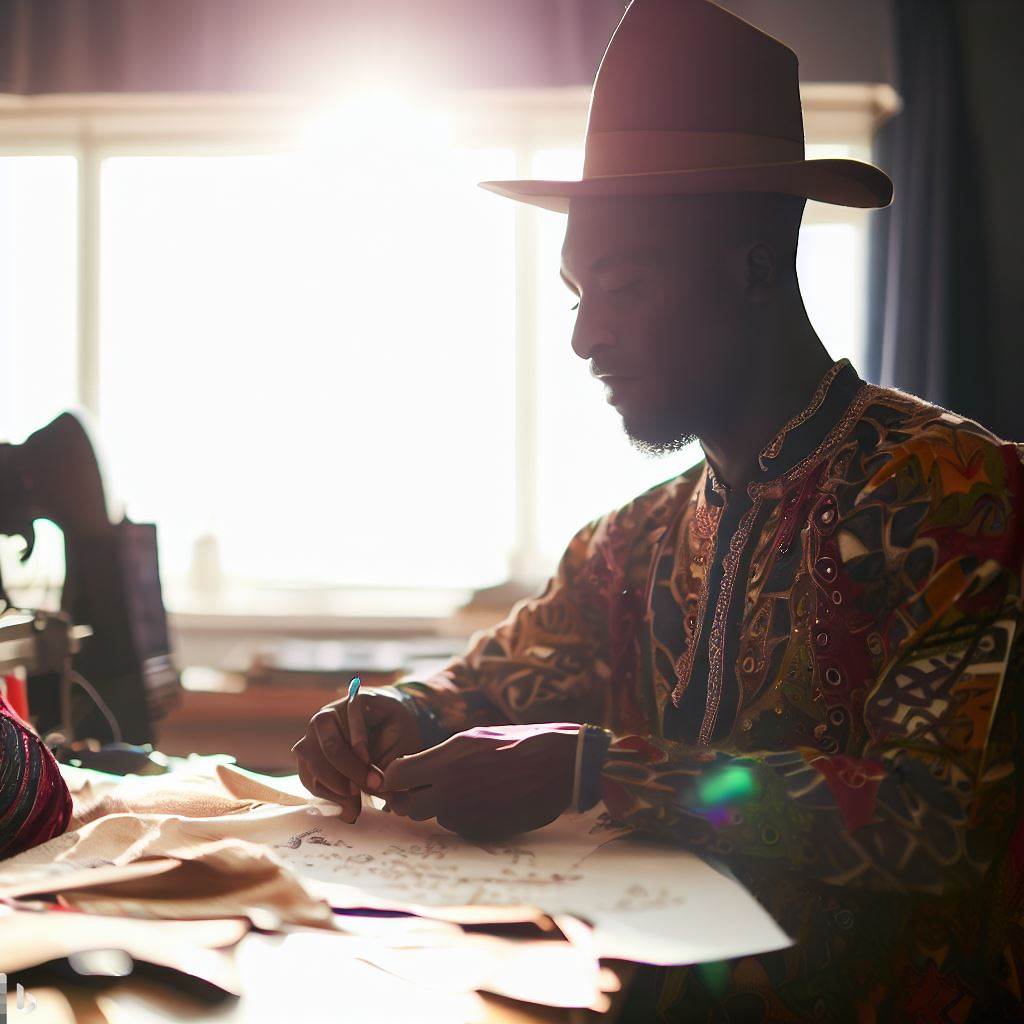
Fittings and Finalizing Costumes
Collaborating with actors and taking their measurements
- As a Nigerian costume designer, one of my crucial tasks is to collaborate with actors.
- I work closely with them to understand their characters and the mood of the scene.
- During this process, I take detailed measurements of each actor to ensure a perfect fit.
- These measurements serve as the foundation for creating personalized costumes for each character.
Conducting fittings and making necessary alterations:
- Once the costumes are ready, it’s time for the actors to try them on.
- I conduct fittings where the actors put on the costumes and adjustments are made if necessary.
- It’s crucial for the costumes to fit comfortably and allow the actors to move freely.
- If any alterations are needed, I quickly make the necessary adjustments to ensure a flawless fit.
Coordinating with hair and makeup artists to ensure cohesive looks
- Creating the perfect costume involves more than just the clothes.
- The overall look must also include the right hairstyles and makeup.
- I coordinate closely with hair and makeup artists to ensure a cohesive visual presentation.
- We discuss the overall vision for each character’s appearance and work together to achieve it.
Working together seamlessly, we aim to create a complete and believable character that fits perfectly into the story.
Behind the scenes, fitting and finalizing costumes is a crucial aspect of a Nigerian costume designer’s work.
Collaborating with actors to take their measurements and understanding their characters is the first step.
Conducting fittings and making necessary alterations ensure that the costumes fit perfectly and allow the actors to move freely.
Coordinating with hair and makeup artists to achieve cohesive looks completes the overall appearance of the characters.
Through teamwork and attention to detail, we bring the characters to life, adding depth and authenticity to the story.
Read: Innovation and Creativity: Keys to Nigerian Costume Design
On-set challenges and problem-solving
In the dynamic and fast-paced world of costume designing for Nigerian films, there are several on-set challenges that costume designers face on a daily basis.
From budget constraints to unexpected situations, they need to think quickly and come up with effective solutions.
Dealing with budget constraints and time limitations
One of the biggest challenges costume designers face is creating stunning and authentic costumes on a limited budget.
They often have to work within tight financial constraints set by producers while ensuring quality and creativity.
To overcome this challenge, costume designers rely on their resourcefulness and ability to find cost-effective alternatives.
They may purchase fabrics in bulk, borrow or rent costumes, or repurpose existing garments to create unique outfits.
In addition to working on a tight budget, costume designers also have to deal with time limitations.
They must create costumes within the given production schedule, sometimes having to design and produce outfits overnight for unexpected changes in the script.
To manage time effectively, costume designers prioritize tasks, work closely with their team, and establish clear communication with actors and directors to ensure everyone is on the same page.
Adapting costumes for various weather conditions and action scenes
Nigerian films often involve outdoor filming, which means costume designers need to consider weather conditions when designing outfits.
They must ensure that the costumes are comfortable and suitable for the climate in which the scenes will be shot.
During action scenes, costume designers face the challenge of creating costumes that not only look good but also allow the actors to move freely without hindrance.
They need to strike a balance between aesthetics and practicality.
To tackle these challenges, costume designers collaborate closely with the production team and conduct thorough research on weather patterns and the requirements of action sequences.
This helps them select appropriate fabrics, make necessary alterations, and add functional elements to the costumes.
Quick improvisation and problem-solving during unexpected situations
On film sets, unexpected situations can arise at any moment, requiring costume designers to think on their feet and find immediate solutions.
Whether it’s a last-minute script change, a wardrobe malfunction, or a damaged costume, they must be prepared to improvise.
During such instances, costume designers rely on their creativity and problem-solving skills to come up with quick solutions.
They may alter existing costumes, make temporary repairs, or even create new outfits from scratch to ensure filming can continue smoothly.
Moreover, costume designers maintain a good rapport with their team and establish strong relationships with local vendors and tailors who can assist them during emergencies.
Publish Your Professional Profile, Business or Brand
Showcase your expertise, gain trust, and boost visibility instantly on Professions.ng.
Publish NowThis network of support enables them to overcome unexpected challenges effectively.
Nigerian costume designers excel in problem-solving, embracing creativity, teamwork, and resourcefulness.
Their dedication to their craft and passion for storytelling shines through their ability to overcome any on-set challenge that comes their way.
Working with actors and directors
Building relationships with actors and understanding their needs
As a Nigerian costume designer, building strong relationships with actors is a crucial part of my job.
It involves getting to know them on a personal level and understanding their unique needs and preferences.
By establishing trust and open communication, I can create costumes that not only enhance the characters but also make the actors feel comfortable and confident in their roles.
Through discussions and fittings, I collaborate with actors to ensure that the costumes reflect their character’s personalities, physicality, and emotions.
Listening attentively to their feedback and incorporating their input helps in creating costumes that truly bring the characters to life.
Effectively communicating with directors to align vision
Working closely with directors is an integral part of the costume design process. Effective communication is key to align our visions and create a cohesive visual story.
Understanding the director’s overall vision for the production is crucial. By having in-depth discussions, I gain insights into the story’s tone, atmosphere, and themes.
This allows me to design costumes that enhance the director’s intended aesthetic.
I also share my creative ideas and inspirations, considering the director’s preferences and ensuring our visions align. It is through this collaborative approach that we bring the script to life visually.
Balancing creative input with fulfilling the director’s vision
Finding the right balance between my creative input and fulfilling the director’s vision is a delicate art that I continuously strive for.
While I bring my own artistic sensibilities and ideas to the table, ultimately, my role is to bring the director’s vision to fruition.
I work closely with the director to understand their specific requirements, incorporating their feedback and making necessary adjustments to the costume designs.
Through compromise and a deep understanding of the director’s goals, I aim to deliver costumes that not only showcase my creativity but also align with the overall vision of the production.
It is important to remember that, as a costume designer, I am part of a collaborative team working towards a common goal – to create a visually compelling and cohesive storytelling experience.
I forge actor relationships, communicate with directors, and balance creativity with vision for costume success.
Working behind the scenes as a Nigerian costume designer comes with its challenges, but the rewards are immense.
It is a privilege to work hand in hand with talented actors and directors to bring captivating stories to life.
Conclusion
A Nigerian costume designer’s behind-the-scenes responsibilities are crucial in bringing characters to life.
From researching historical details to designing and creating costumes, their work is meticulous and immersive.
We appreciate the efforts of costume designers in transforming actors into their roles and enhancing the storytelling experience.
The attention to detail and creativity they bring to their craft is truly commendable.
We encourage readers to explore and appreciate the diverse world of costume design in different cultures.
Each culture has its own unique style and significant stories to tell through clothing, highlighting the rich tapestry of our world.

